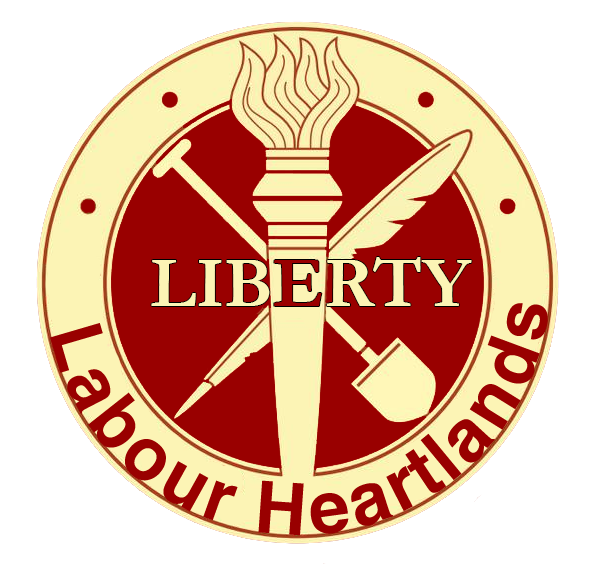Former mining communities are losing their community assets sold by the trustees of their heritage.
As a child living on the council estates of a coal mining village, you were educated early on about the importance of collectivism, mutuality and the need for solidarity. As a child, I was lucky to benefit from huge playing fields, sports clubs and even an outdoor lido built by a group of people who had experienced great poverty, hardship and brutality of early mining. At the turn of the century, the ‘black diamond’ was discovered in abundance in South Yorkshire. It brought thousands of workers to the area in scenes reminiscent of the gold rush in the Klondike. This brought great wealth to the colliery owners and harshness for the workers. The tin shanty towns and makeshift homes were a common sight near the fledgling collieries.
These communities grew and a mutual bond developed around their communal workplaces. The history of the Labour movement and trade unionism grew with it. It was through the experiences of lockouts, brutal treatment by the colliery owners and the dangers of work that saw the need for unity amongst the men in the mines. They wanted secure safe workplaces, better living standards for their families and above all a better future for their children. These are the pillars of which our communities grew from shanty towns to the places we now live in.
It was these people that saw the power of community, how acting collectively could bring about the change that they hoped for. The slums and ‘tin towns’ didn’t magically transform into decent, affordable rented homes. The schools, parks and sports fields, clubs, public libraries, and swimming pools didn’t appear by chance. Everything was fought for and won by collective action and organising at the collieries. The Miner’s union was a key driver in organising candidates to stand in elections and gain political power which in turn helped them build from the ground up communities that everyday workers and their families could be proud of and enjoy a better standard of life. They needed roses as well as bread, as the song goes.

These early political pioneers had no precedent to follow. They were the first working-class politicians to gain the levers of power. They used it wisely, in the interests of their class. They used this power to build homes with secure tenancies, not the ‘tied-cottages’ which could be used as a tool by the colliery owners. Throwing families out during strikes to put pressure on men to return to work. These homes were community built and owned, secure family homes in place of fear of retribution from the unscrupulous landlord class.
These early pioneers also built the recreation facilities such as football grounds, cricket fields and bowling greens. They built social clubs and welfare halls so as to give a community hub for social activities such as annual trips to the seaside or galas. They were central to the community and many still are. Every municipal act had the goal of improving the lives of the families and citizens in that community. This was democracy in action, bringing emancipation from hardship to the local people.
Education was the key to ‘break the chains of poverty’ for many in these communities. It was viewed as gifting future generations a chance of a better life in the professions, which was a route barred to many working-class people in the first decades of the 20th century. That chance of social mobility for one’s children was, and still is, the hope and dream for many working-class people.
This history is important. It is important for us as working-class communities to be aware of and proud of our history, culture, and heritage. We stand on the shoulders of giants. Those who built, founded and endured through tremendous hardship, personal suffering as well as personal sacrifice so the next generations (meaning us) could enjoy lives and living standards that they could only dream about. They were the dreamers who became the builders and should inspire us all to fight for those gifts that they left to us. The things that we now take for granted. But these are swiftly being taken from us at an alarming rate, right from under our noses – on the majority of occasions against the wishes of the community.

As the collieries began to be massacred on the altar of Neo-liberalism and Monetarism, our assets were handed to a charity whose aims were to, in their own words, “work to secure the future of recreational facilities in former coal mining communities and work with local mining charities to ensure their services continue.” They claim to be benefactors, a charitable organisation similar to those early community organisations mentioned above that saw municipal acts and altruism. It’s a heart-warming claim, isn’t it? They go on; “We will secure the provision of recreational facilities where these are still needed and utilised by former coal mining communities.” You’d think that our community assets, handed down the generations unto us would be safe, wouldn’t you? Think again.
A simple search on Google will fill you with horror and anger. Miners and communities around the former coalfields are now engaged in often-bitter disputes with the charity to save their assets from being sold off. In Derbyshire, the miners built a retreat at Skegness so that families and the infirm could enjoy a break by the coast. This was sold off despite a huge battle to save it by Derbyshire miners and the wider community; LINK The reason, ‘not economically viable.’

When a Miners Welfare club in Askern, Doncaster sought to make use of surrounding land to raise money for a refurbishment they failed. They were told the land didn’t belong to them, the miners and past generations who’d founded it, paid for via members fees, maintained it for decades. No, it now belonged to the charity set up to ‘watch over it’ to preserve it for future generations as the aforementioned quote states. LINK

The miners were told in no uncertain terms that; “CISWO will not consent to any sale where refurbishment of the building is a condition.” Further-more, if the land was to be sold, the money was CISWO’S not the local miners and their community. Taken from the article; “In a letter supplied to the planning committee at a meeting on Wednesday, Nicola Didlock, CISWO chief executive said: “According to the Charity Commission Scheme dated 30/12/2011, the land cannot be sold without consent from CISWO. “The governing document also states proceeds of sale will revert to CISWO, not the charity selling the land.”
In Dinnington, in the heart of South Yorkshire, a similar story unfolded. Local miners fought and fought for years but were finally defeated in the courts this year. It was a devastating blow to the community who had recently celebrated the dedication of a local memorial garden and monument paid for and built by the community to their mining heritage. A local blogger recorded his dismay and frustration at the situation.
In nearby Maltby, another tale of a local dispute between CISWO and ex-miners is taking place: LINK
Despite making numerous attempts to replace the failing trustees, the pleas fell on deaf ears. After almost two years, the welfare club was closed and left to fall into disrepair. Many believe this was done on purpose! This then creates a reason to sell off the asset, a ruse used many times before: it’s no longer economically viable, so it must be sold. Who benefits? You guessed it, CISWO. The ‘Welfare’ is due to be sold off this week – 8th October by auction.
A group of ex miners began to fight back. Unfortunately, the law is on CISWO’s side and as many times before, the local community look like losing out. Despite many of the Trustees of CISWO being from mining backgrounds and Trade Union backgrounds.
“CAMPAIGNERS aiming to save Maltby’s Stute accused CISWO of going behind their backs after the club was put up for sale. Maltby Miners Welfare & Recreation Protection Group had been readying a plan to reopen the Muglet Lane venue. They were heartened when landowners CISWO the coal-mining charity repossessed the building in June and pledged to work with the community. But the Stute appeared on the Rightmove website featuring photos taken before the end of August deadline for the protection group’s deadline to submit proposals.” Quoted from the above Rotherham Advertiser article by By Gareth Dennison -29/09/2020.
“We’ve got a completely viable option,” said Terry Gormley, protection group chairman. A quote that seems to be heard time and time again in these situations around the coalfields.
The Irony of conservative MPs trying to save the former coal mining communities heritage is not lost on the people of the former Red wall.
The matter was discussed in the Houses Of Parliament after Alexander Stafford MP raised the issue via an Early Day Motion. In response, Leader Of The House Jacob Rees Mogg MP stated that the building could be listed as a community asset and thus prevent the sale.
https://edm.parliament.uk/early-day-motion/57457/the-maltby-miners-welfare-institute
History has proven this not to be the case. Dinnington miners managed to get their welfare and sports facilities listed but guess what happened? Yes, they were delisted. https://www.rotherham.gov.uk/directory-record/1249/dinnington-miners-welfare-recreation-ground-
“The nomination application was previously assessed and placed on the successful register as an asset of community value on 27/03/2014. Following an objection to the successful listing by the property owners an internal review of this decision was undertaken by an Appeals Adjudicator who did not take part in the original decision to list. A determination on the objection to the listing considered all the evidence provided with the completion of the Objection Evaluation Criteria Form. After an assessment of the evidence provided a decision was made to overturn the original successful decision. Accordingly, the asset will now be removed from the successful register and placed on the unsuccessful register for a period of 5 year from the date Cabinet approval to this decision was granted (6 August 2014).”
To rub salt into the wounds of the miners at Maltby, CISWO had sold off a garage that had been used as the depot for the Maltby Home Coal and Transport Company in 2017. This was an early act of mutuality amongst colliery workers who contributed each week paying into the company directly from their pay since the 1920s. It was run as a co-operative, so the miners had delivery of coal concessions and buses to take them to the pit head from the village for nearly a century. CISWO gained £135,000 from the sale. A building that they had no moral right to. No one locally can identify a single penny gained from the sale that has been reinvested into the mining community.
The actions of CISWO have been a concern for some time. Hansard recalls that concerns about sports facilities and recreational sites in mining areas being sold off was debated in October 2018.
A quote from the debate:
“It would be helpful if the Government supported the trust to update that database and review which facilities remain, and which are no longer available. For those facilities that are no longer in use, I would be particularly keen to learn how they were disposed of and what reinvestment was made in the communities when those facilities were lost. If land was sold, where did the money go?”
Yorkshire’s former mining communities losing their recreation grounds
Indeed, where does the money go and how much is reinvested. Concerns were also raised in the Yorkshire Evening Post. A key fact is featured in the article; “officials from the National Union of Miners argue CISWO could be doing more to keep the grounds open. They also say that if sites do have to close and land sold off, money should go back to that specific local community rather than into the general CISWO accounts, as is the case currently.”
In the article Chris Skidmore of the Yorkshire NUM argues; ‘It is a chicken and egg situation. You can’t move with the times if you haven’t got the funds to do it. There will always be a need for recreational facilities – it is getting people inside and using those facilities. In essence, if they don’t get extra funding then it will be the same as any pub, any organisation, that if it doesn’t get used and promoted then it falls into disrepair’.”
The full article can be viewed here; https://www.yorkshirepost.co.uk/news/yorkshires-former-mining-communities-losing-their-recreation-grounds-54145 It lists many examples where miners and their communities have fought to save their assets built up and paid for by the miners, their families and community only to lose out to the tune of hundreds of thousands of pounds. There is no real evidence to suggest that money is reinvested in that community to compensate for the loss of such assets. As Chris Skidmore states above, if the clubs and sports grounds don’t receive help and investment from CISWO then they will fail. Is this why they are left to fail? Is the plan to allow these assets to fail and then sell them off? Many think so. Why do the miners and their communities distrust the charitable organisation that has been established to safeguard their assets? It may be down to their actions – as the saying goes – ‘actions speak louder than words!’ Time and time again community assets are being sold off against the community wishes. How can this be right? Twice this has been discussed in Parliament, yet the charity continues to pursue the same policy. There are a few examples of communities fighting for their assets above but there are more, too many to list in one article.
It’s the moral duty of the trustees of this charity to act. They should take another look at how the charity operates in terms of protecting these valuable and much-loved community assets. After all, these welfare clubs and sports grounds can be found in areas of high deprivation. They are vital for health and exercise. The Welfare clubs could be developed into community hubs and vital points of services such as OAP meeting places, youth centres, places offering benefits advice or advocacy, legal centres, libraries as others close, educational centres offering local history and cultural benefits. The list is endless. All it requires is for the trustees to seize the moment and redefine the charities purpose.
My last note is a financial one. CISWO’s own accounts show that they have a few pounds short of £35 million in their accounts. Yes, that’s almost an astonishing THIRTY-FIVE MILLION POUNDS. All acquired from the assets of mineworkers, their families, and their communities. It is time to reimburse those people and help rebuild our communities.
Andrew Searson – The Maltby Miners Recreational Facilities Protection Group
More By Andrew Searson – LABCON: The Transmogrification of the Labour Party
Help Us Sustain Ad-Free Journalism
Sorry, I Need To Put Out the Begging Bowl
Independent Journalism Needs You
Our unwavering dedication is to provide you with unbiased news, diverse perspectives, and insightful opinions. We're on a mission to ensure that those in positions of power are held accountable for their actions, but we can't do it alone. Labour Heartlands is primarily funded by me, Paul Knaggs, and by the generous contributions of readers like you. Your donations keep us going and help us uphold the principles of independent journalism. Join us in our quest for truth, transparency, and accountability – donate today and be a part of our mission!
Like everyone else, we're facing challenges, and we need your help to stay online and continue providing crucial journalism. Every contribution, no matter how small, goes a long way in helping us thrive. By becoming one of our donors, you become a vital part of our mission to uncover the truth and uphold the values of democracy.
While we maintain our independence from political affiliations, we stand united against corruption, injustice, and the erosion of free speech, truth, and democracy. We believe in the power of accurate information in a democracy, and we consider facts non-negotiable.
Your support, no matter the amount, can make a significant impact. Together, we can make a difference and continue our journey toward a more informed and just society.
Thank you for supporting Labour Heartlands











